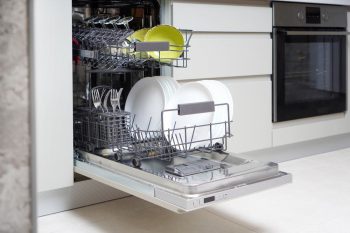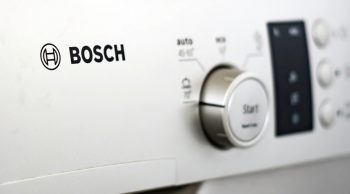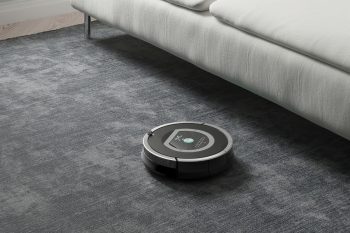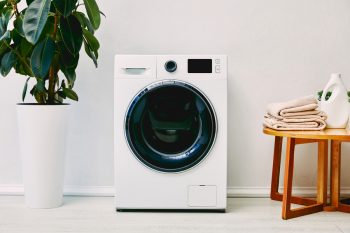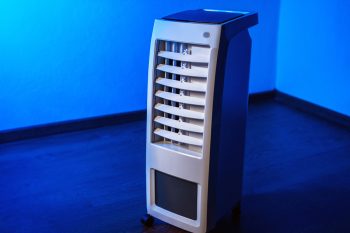
Washing machines are a valuable part of our household appliances. They save us time, energy, and the manual labor of washing our clothes. However, like any other appliance, they need regular maintenance to keep them running efficiently. Neglecting this maintenance can lead to costly repairs, reduced efficiency, and a shorter lifespan for your machine.
In this comprehensive guide, we will explore how to maintain a washing machine, the importance of regular maintenance, and tips for different types of washing machines.
To maintain a washing machine, regularly inspect and replace its hoses, clean it monthly to prevent mold and bacteria growth, and use the correct type and amount of detergent. Don’t overload the machine, clean the rubber gasket, detergent dispenser, and lint filter regularly. Leave the door open after each use to allow air circulation and deep clean it periodically. Maintenance practices may vary slightly depending on whether you have a front-load or top-load washer.
The Importance of Regular Maintenance
Regular maintenance of your washing machine can prolong its life, ensure it runs efficiently, and save you money on utilities and repairs. Regular cleaning can prevent mold and bacteria growth, keeping your clothes and the machine itself in better condition. This reduces the strain on the motors and other moving parts, making them less likely to break down.
Moreover, regular maintenance helps identify potential problems early on, allowing you to address them before they become bigger issues. For example, regular inspection of your washing machine may help detect a small leak before it becomes a major problem, preventing costly repairs or even the need for a replacement.
How Often Should You Perform Maintenance?
The frequency of washing machine maintenance depends on the specific tasks involved. Here are some general guidelines:
- Inspect the washer’s hoses monthly and replace them every three to five years.
- Clean your washing machine regularly to limit mold spores and maintain freshness. For most households, a monthly cleaning is recommended. However, for singles or households with less laundry, cleaning every two to three months is sufficient.
- If your washing machine is working overtime, consider cleaning it twice as often as you normally would.
- Clean the lint filter regularly.
- Leave the door open for air circulation when the machine is off to prevent mold and mildew growth.
Key Maintenance Steps for All Washing Machines
Regardless of the type of washing machine you have, there are several key steps you should take to maintain it:
- Use the correct type of detergent: Make sure to use the appropriate detergent for your washing machine, as high-efficiency washers require a special, low-sudsing detergent.
- Don’t use too much detergent: Excess detergent can leave residue on your clothes and cause wear and tear on your washer. Always follow the appliance instruction manual for the correct amount of detergent.
- Don’t overload the machine: Overloading the washing machine can cause damage and reduce its efficiency. Make sure to load your clothes according to the manufacturer’s recommendations.
- Inspect and replace water hoses: Check hoses regularly for bulging, cracking, fraying, and leaks around the ends. Replace the hose if a problem is found or every three to five years as part of a proactive maintenance program.
- Clean the rubber gasket: Regularly clean the rubber gasket around the door to prevent mold and mildew buildup.
- Clean detergent and fabric softener dispensers: Keep the dispensers clean to ensure proper functioning and prevent residue buildup.
- Clean the filter: Regularly clean the lint filter to maintain the efficiency of your washing machine.
- Leave the door open: After each use, leave the door open to allow air circulation and prevent mold and mildew growth.
- Deep clean your washing machine: Periodically deep clean your washing machine using a manufacturer-recommended product or a mixture of bleach, baking soda, or white vinegar.
Maintaining Different Types of Washing Machines
Different types of washing machines, such as front-load and top-load washers, may require slightly different maintenance practices. For instance, front-load washers are more prone to developing mold and mildew due to their design, so they may require more frequent cleaning. On the other hand, top-load washers may have issues with lint and detergent buildup, so they may need more frequent filter cleaning.
The Cost of Neglecting Maintenance
Neglecting regular washing machine maintenance can lead to several potential costs and issues, including increased repair costs, damage to fabric and clothing, health risks due to bacteria and mold, reduced efficiency, and a shortened lifespan. Regular maintenance, such as cleaning the lint filter, inspecting hoses, and leveling the machine, can help prevent these issues and prolong the life of your washing machine.
In conclusion, maintaining your washing machine is a crucial task that can save you time, money, and prevent stress down the line. By following the steps outlined in this guide, you can ensure that your washing machine continues to serve you efficiently for many years to come. Happy washing!
Frequently Asked Questions
What type of detergent should I use for a high-efficiency washer?
For high-efficiency washers, you should use a high-efficiency (HE) detergent. HE detergents produce fewer suds and make it easier for HE machines, which use less water, to rinse out the soap.
How can I deep clean my washing machine?
To deep clean your washing machine, you can use a manufacturer-recommended product or a DIY solution. For a DIY solution, you can use a mixture of baking soda and vinegar. First, add ½ cup of baking soda to the drum of your machine and run it on the hot water setting. After it fills up, add 1 cup of white vinegar and let the machine run for a few minutes. Then pause the machine and let the vinegar and baking soda mixture sit for an hour. After an hour, let the machine finish its cycle.
What are the signs that I need to replace my washing machine hoses?
Signs that you may need to replace your washing machine hoses include bulging, cracking, fraying, and leaks around the ends. Even if you don’t see these signs, it is recommended to replace the hoses every three to five years as part of a proactive maintenance program.
Do I need to leave the door of my washing machine open after every wash?
Yes, it is recommended to leave the door of your washing machine open after every wash. This allows air to circulate and helps prevent the growth of mold and mildew.
How often should I clean my washing machine’s lint filter?
The frequency of cleaning your washing machine’s lint filter can vary depending on your usage. However, it is generally good practice to clean it after every few washes to maintain the efficiency of your machine and prevent any potential damage.

